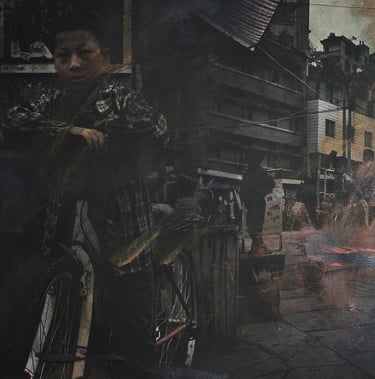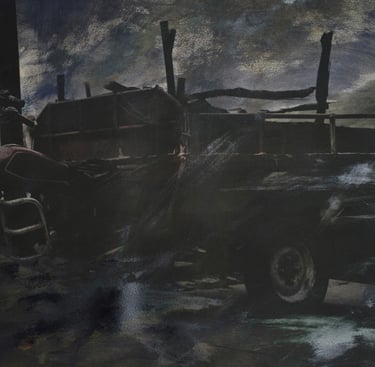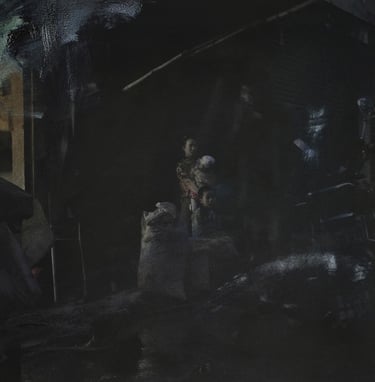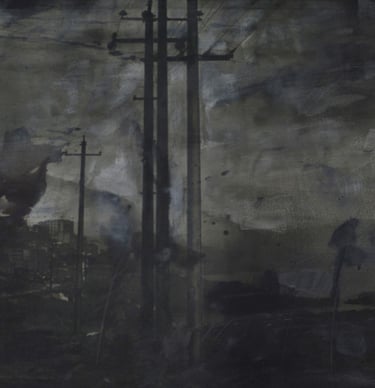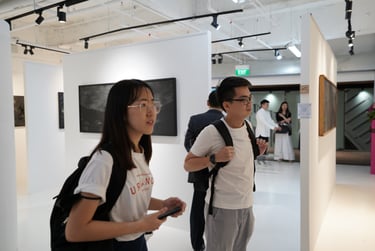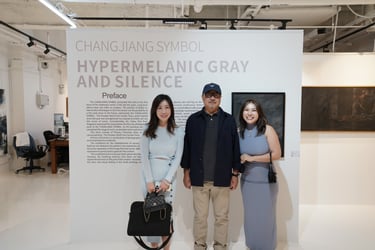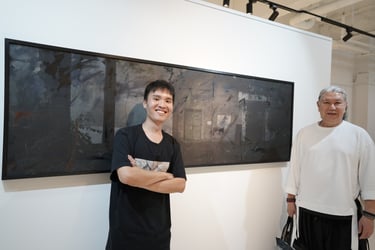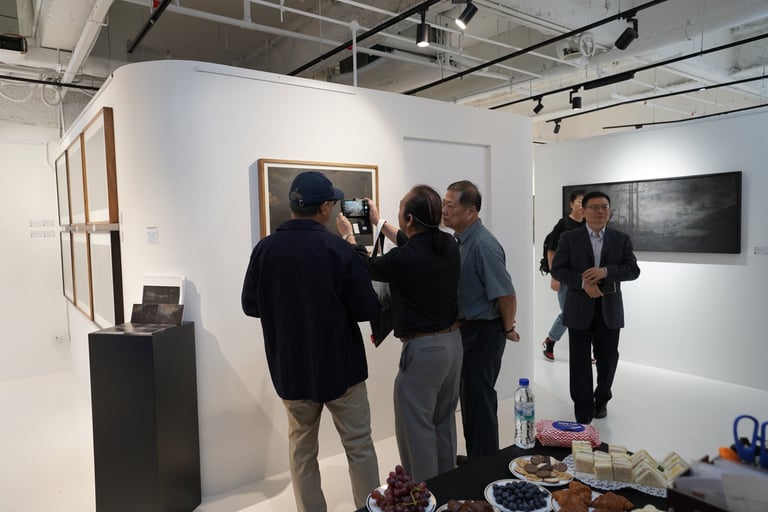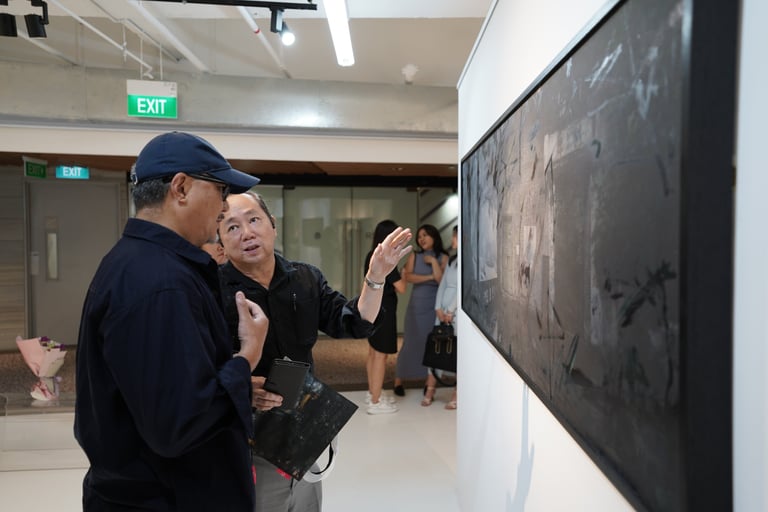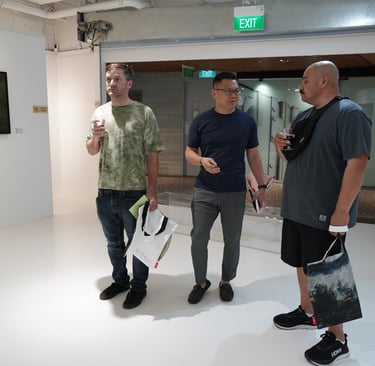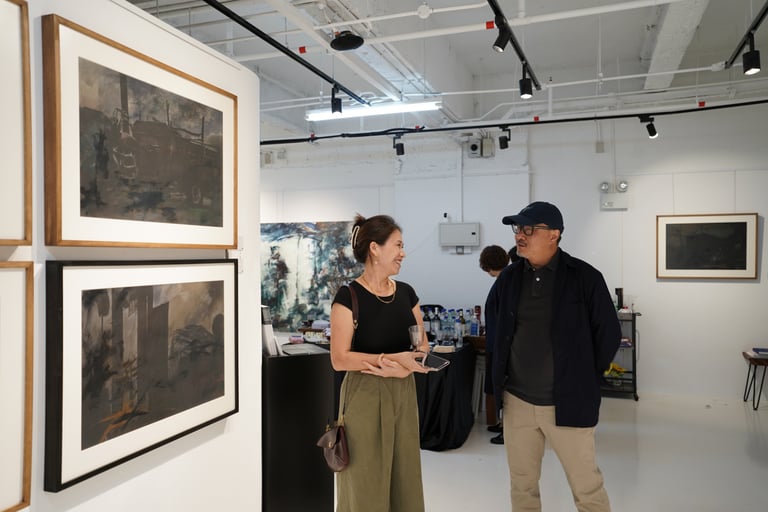Exhibitions: Hypermelanic Gray and Silence, 18th March to 6th April 2024
The presentation of the Yangtze River Journal this time is Pei Xuehong's first exhibition of his works in the past ten years. The long silence does not mean there has been no creation. The photo intervention practice that started in 2015 made me see the possibility of a future full-scale exhibition, especially the "Cloudy Rocks and Pine Winds" of the Yangtze River Journal that I started creating last year, which strengthened my impulse to briefly sort out this series. Miss Chloe Chai from Singapore happened to show anticipation for this new photography work of the Yangtze River Journal. When Pei Xuehong happened to complete this phase of work, we decided not to wait any longer.
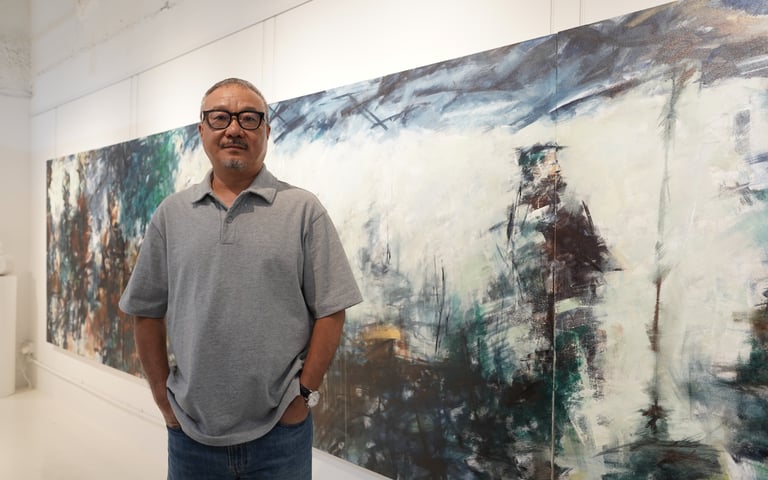

An Artistic Presentation of Memory and Reflection on the Yangtze River
Pei Xuehong's SoloArt Exhibition
"Yangtze Chronicles" Held in Singapore
On March 18, 2024, Chinese artist Pei Xuehong held his solo art exhibition "Yangtze Chronicles" at the Art District SG Gallery in Singapore, marking a concentrated display of his artistic works focusing on humanistic concerns. This exhibition, following his photographic work "Nine Paths" winning the Contemporary Outstanding Chinese Photographer Award at the 2005 China Pingyao International Photography Exhibition, serves as the inaugural exhibition of the "Yangtze Chronicles" global tour.
Born in Chongqing, China in 1967, Pei Xuehong graduated from the Sichuan Fine Arts Institute and has been engaged in artistic creation, including oil painting and photography, for many years. His works have been referenced by the Los Angeles Times and the Chinese Art Department's Photography Art Theory. His achievement of the Contemporary Outstanding Chinese Photographer Award at the 2005 China Pingyao International Photography Exhibition showcases his profound artistic accomplishments.
In May 2004, Pei Xuehong photographed a series of scenes before the ancient city of Yunyang in Chongqing before its submergence. Over the years, he has often recalled his feelings when photographing in the ancient city of Yunyang. As time passed, he increasingly felt that the pure output of photographs was inadequate to express the unique scenes of the county town about to be submerged underwater. Therefore, he creatively intervened in the output of these photos, forming the intervened photographic works presented in this exhibition.
On the afternoon of March 18, Pei Xuehong's personal art exhibition officially opened. It was an artistic presentation about the memory and retrospection of the Yangtze River. The combination of a pure white exhibition hall and dark imagery created a particularly strong effect, leaving attendees surprised and amazed. The theme of this exhibition is "Yangtze Chronicles," featuring a series of small-scale "Original" works. The clear casualness in these small-scale images allows people to return to the gloomy mist on the banks of the Yangtze River. There are also visually impactful "Chronicle" series, originating from a large number of panoramic photos taken in the ancient city of Yunyang, which constitute the main part of the entire exhibition. Several "Chronicle" works are presented in large and long formats, combining various materials of photographic output. The on-site audience showed strong interest in the presentation method of such large-scale images. The larger "Cloud Rock and Pine Wind" is a large-scale canvas oil painting, bringing out some subtle colors and bright meanings in the entire exhibition hall. Its width occupies an entire wall of the exhibition hall, with the author integrating himself into the content, aiming to transform photographic forms into canva
These photographic outputs and oil paintings more profoundly record the daily life scenes of the common people on the banks of the Yangtze River in the land of Bashu, depicting the cultural conditions of some relocated people under the background of the construction of the Three Gorges Dam, a project of the century. In the images, the repetitive strokes at least create the instability that the author needs. With the imminent arrival of the flood, the atmosphere of the submerged area at that time was clear and definite. The coded repetition below the 175-meter waterline in the ancient city, along with the rubble around them, was shrouded in mystery in the same way, with no knowledge of its mysterious intent. Clearly, the current output of photography is not enough. The people who stayed behind in the old city of Yunyang are overlapped, guarding restaurants without landlords or customers; grandparents and grandchildren who stopped attending school when the schools closed; migrant workers who don't want to leave; indifferent vendors; blurry failures who don't care whether it's day or night; patients; the elderly; people with no prospects who are mentally absent...
Pei Xuehong began to realize that these archetypes cannot be presented in a positive and direct manner. He believed that if it were not for the self-awareness of painting, the entire Yangtze Chronicles would become completely serious and serious. Letting the images speak would make them seem correct, and that cold objectivity would spread throughout the entire narrative. After the change and diversity, he no longer asserted like this and began to believe in the existence recorded.
In a colorful city like Singapore, visitors were deeply attracted by the artist's portrayal of a past event, as if the cold gray colors allowed them to enter the event of the submerged area 20 years ago. They lingered in front of the work "Cloud Rock and Pine Wind," which occupies the entire wall, feeling the awakening and impact of the memory of the Yangtze River in the picture. They engaged in discussions and exchanges with the author.
Young artists have been engaged in enthusiastic exchanges with the author, eagerly wanting to know the professional techniques and creative methods of "Yangtze Chronicles" and discussing these image treatments with the author. Doctors, teachers, and civil servants also came to the exhibition hall, all expressing their joy at seeing works that are rarely seen in Singapore.
After carefully examining each "Chronicle" and "Original" dark image, a psychologist was deeply moved. He understood that in each image, there is a beam of light from different directions or a bright color, indicating perhaps a glimmer of hope in the sinking life.
Pei Xuehong interacted with everyone, engaging in artistic exchanges and delving deeper into humanitarian concerns. Pei Xuehong understands it this way: what makes a good exhibition, a good work? The most crucial aspect is whether there is a communication of ideas between his works and the audience, whether it's joy or sorrow, or a childhood memory. If there is resonance between people and the artwork, then such works are considered good.
For over 30 years, Pei Xuehong has consciously connected artistic creation with the life experiences of ordinary people, focusing heavily on themes that reflect real-life and portray the spiritual demeanor of the new era's people. He has always maintained an attitude of exploration and innovation in his creative endeavors, consistently embodying profound patriotic, people-oriented, and cultural sentiments. Despite the tight scheduling of this exhibition due to time constraints, it did not hinder the overall presentation of "Yangtze Chronicles." This was quite rare and marked another breakthrough in his artistic career, especially in his creative use of photographic output as an artistic technique. It deeply depicted and recorded the everyday emotions of ordinary people living on the banks of the Yangtze River under the backdrop of the construction of the Three Gorges Dam and the relocation of migrants. This exhibition not only showcases his artistic trajectory and journey but also brings a fresh perspective to the creation of photography and oil painting. Through these lenses and images, the audience can gain a deeper understanding of Pei Xuehong's artistic pursuits, humanitarian concerns, as well as the stories behind historical moments such as the country's reform and opening up and the construction of the Three Gorges Project.
The premiere exhibition of "Yangtze Chronicles" artworks in Singapore actively responds to the national initiative of the "一带一路," promoting cultural exchanges between China and foreign countries. In this exhibition, viewers will personally experience the stories expressed by Pei Xuehong through his lens and brush, exploring history while witnessing the continuous evolution of art. The presentation of the exhibition is the best expression of Pei Xuehong's efforts over the years, bringing the audience a unique artistic feast.




